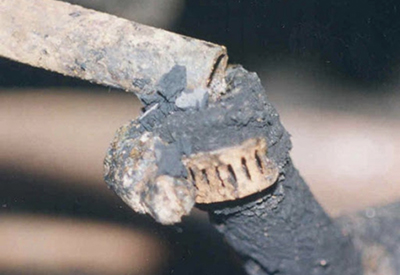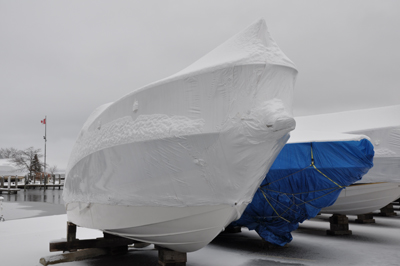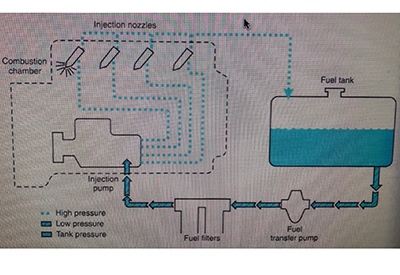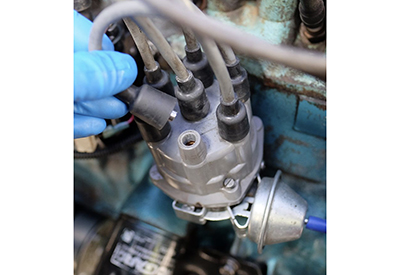Ask Andrew: Trailer Time
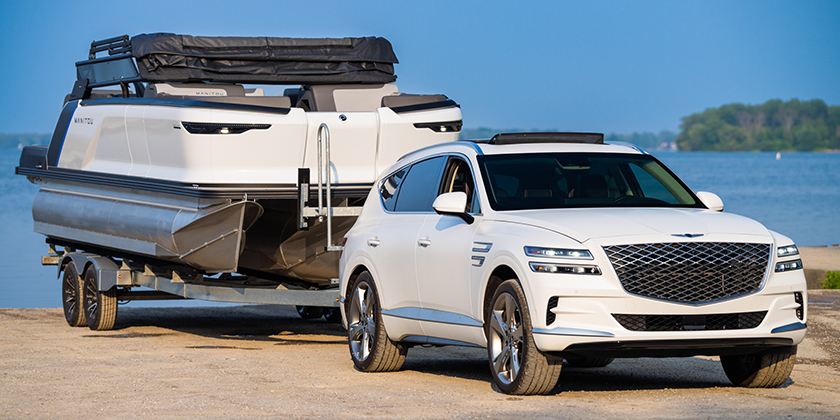
Mar 14, 2024
Boats will be on the road soon enough. Sounds strange, doesn’t it, but one of the critical missing maintenance points in order to get thousands of boats across the country from storage to the water, is the distance it has to travel, towed on a trailer.
As with many boating things in Canada, one of the critical issues that we face is the seasonal nature of use; trailers are used in lots of different ways, leading to lots of wear-and-tear issues. Some trailers are stored for six months of the year then used only to drop the boat into the water and to retrieve it at season-end. Others are used 12 months of the year, on a roadshow, chasing warm weather. Still others are used every weekend during the boating season but stored with the boat over winter. Whichever way you use your trailer, there are a few key maintenance points to consider every spring.
Trailer ratings:
Every trailer will have a manufacturer’s sticker on the inner frame, which will show two important pieces of information: The max weigh of the vessel that it can carry, and the designed tire-pressure for supporting that load. Before towing with any trailer (especially if its a new-to-you trailer or boat), be sure to reference this sticker.
Tire condition: tire pressure, torque, and bearings
The trailer’s tires do most of the work: They hold the trailer frame up, they support the load as it travels over bumps and uneven surfaces and allows free movement forward and back. One of the often-overlooked issues with trailer tires is the wear damage that happens over winter if the tire loses air pressure and is left deflated while supporting the weight of the boat on top. The sidewalls can weaken overtime, causing the tires to fail at often inopportune times. Before storing for long periods, and before moving a trailer onto the road, be sure that the tire is at the correct pressure (as noted on the trailer manufacturer’s sticker), and that it holds that pressure for 24 hours.
Another critical check to make on the tires is the hardware that holds the tire to the trailer hub. The hub has bolt studs that allow the tire to mount, and the tire is held in place by tire lugs. The lugs have to be ‘torqued’: meaning that they are tightened to an appropriate specification. The torque-spec ensures that the lugs are tightened enough that they shouldn’t loosen on their own, but not so tight that the studs could be damaged. A special torque wrench is used to ensure that this specification is met.
The last critical tire-specific check to make is the wheel bearing that allows the tire and wheel hub to turn against a rigid frame. The bearing has a number of metal rollers inside that allow the wheel to turn. As the wheel turns quickly, heat builds up through friction. The bearing requires grease to ensure that the friction-damage is kept at bay, and also to keep water out (from immersion during launch operations). The bearings should be checked for excess play periodically.
Bunks, winches and set-up
The condition of the supports for the vessel should be checked over: The bunks or rollers should be checked to ensure that they are strong enough to support of the load of the boat, and that they roll freely (in the case of rollers), and that they are covered appropriately (often with carpet, in the case of bunks).
Most trailers are adjustable: The bunks can be positioned to fit the boat that it is supporting. The also applies to the winch stand: Both the height and length can be adjusted to ensure that the boat rides on the trailer correctly. Ensure that all bolts are tightened, especially if/when any changes are made.
Lights and electrical connections:
Trailer lights connect to the tow vehicle so that the controls in the tow vehicle will show through the trailer light system. This includes running lights, braking and turn signals. The trailer light connection can be 4-pin flat, 5-pin flat, 6-pin round or 7-pin round; numerous adaptors are available to marry up vehicle and trailer connections. The trailer lighting system is interesting in that the ground wire in each 12V circuit is run through the frame of the trailer, and essentially is grounded to the tow vehicle’s frame. Wires need to be kept corrosion free, and the frame should be as rust-free as possible. Its good practice to use an anti-corrosion film on the connections, and to keep them in good working order.
Safety devices:
Safety chains, winch straps, winch hooks and tie-downs should all be regularly inspected and replaced as soon as any wear is noted.
As always – if any maintenance tasks are out of your comfort zone, connect with a trusted marine tech to take on the service work for you to ensure that your trailer is safe and trouble free this season!

For even more on trailers and trailering, check Andrew’s feature in the April edition of Canadian Boating magazine
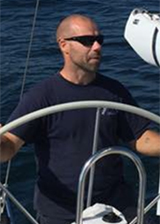
Andrew McDonald is the owner of Lakeside Marine Services – a boat repair/maintenance firm based in Toronto. Andrew has worked in the marine industry for 12 years and is a graduate of the Georgian College ‘Mechanical Techniques – Marine Engine Mechanic’ program. Questions or comments for Andrew? Email him directly via: info@lakesidemarineservices.ca

